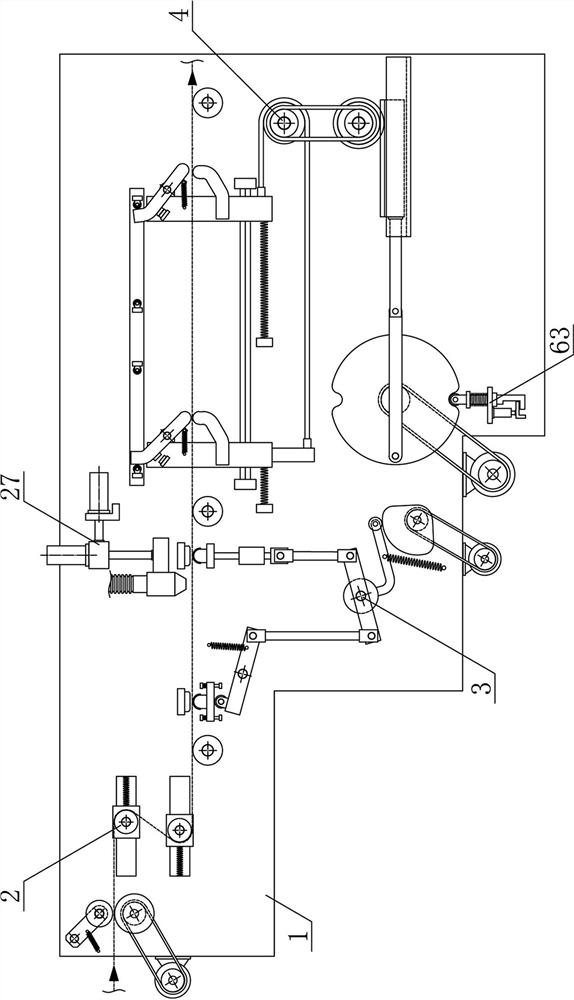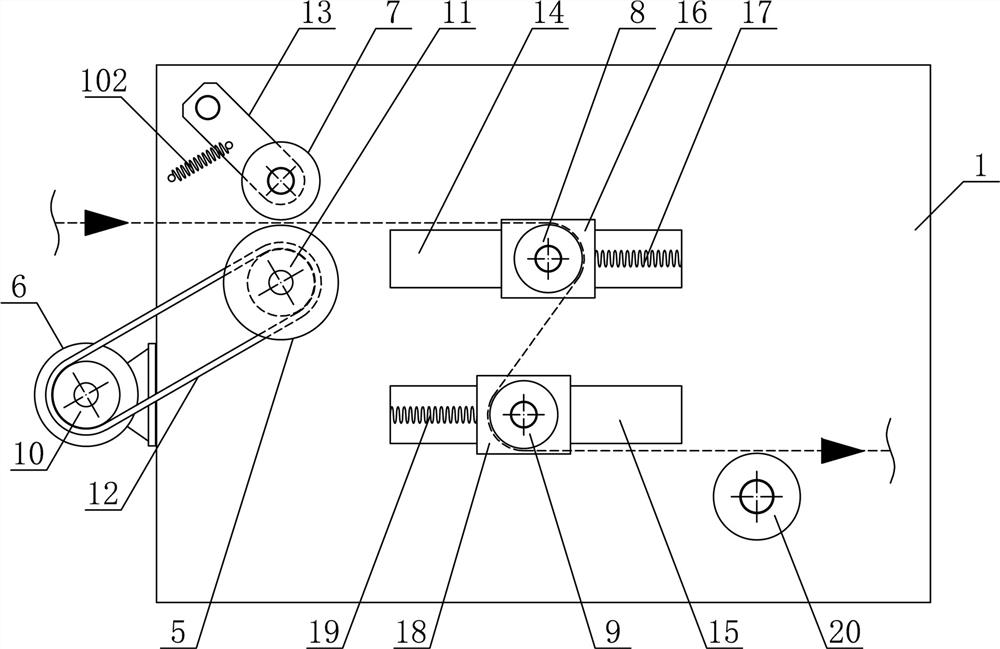Melt-blown cloth conveying and processing device
A processing device and a technology for melt-blown cloth, which are applied in the field of melt-blown cloth conveying and processing device and continuous production and processing of melt-blown cloth, which can solve the problem of difficulty in achieving multiple suction removal, poor quality, and suction and removal efficiency of fibers adhered to the surface of melt-blown cloth. lower problem
- Summary
- Abstract
- Description
- Claims
- Application Information
AI Technical Summary
Problems solved by technology
Method used
Image
Examples
Embodiment Construction
[0023] In order to further describe the present invention, a specific implementation of a melt blown cloth conveying and processing device is further described below in conjunction with the accompanying drawings. The following examples are for explaining the present invention and the present invention is not limited to the following examples.
[0024] Such as figure 1 As shown, a melt blown cloth conveying and processing device of the present invention includes a cloth transfer processing support 1, a cloth feeding and guiding mechanism 2, a cloth pressing suction mechanism 3, and a cloth spreading transmission mechanism 4. The cloth feeding guiding mechanism 2, a cloth pressing suction mechanism The miscellaneous mechanism 3 and the cloth transfer mechanism 4 are arranged in the horizontal direction on the side of the spreading processing support 1, such as figure 2 As shown, the cloth feeding and guiding mechanism 2 of the present invention includes a cloth feeding transfer roll...
PUM
 Login to View More
Login to View More Abstract
Description
Claims
Application Information
 Login to View More
Login to View More - R&D
- Intellectual Property
- Life Sciences
- Materials
- Tech Scout
- Unparalleled Data Quality
- Higher Quality Content
- 60% Fewer Hallucinations
Browse by: Latest US Patents, China's latest patents, Technical Efficacy Thesaurus, Application Domain, Technology Topic, Popular Technical Reports.
© 2025 PatSnap. All rights reserved.Legal|Privacy policy|Modern Slavery Act Transparency Statement|Sitemap|About US| Contact US: help@patsnap.com



